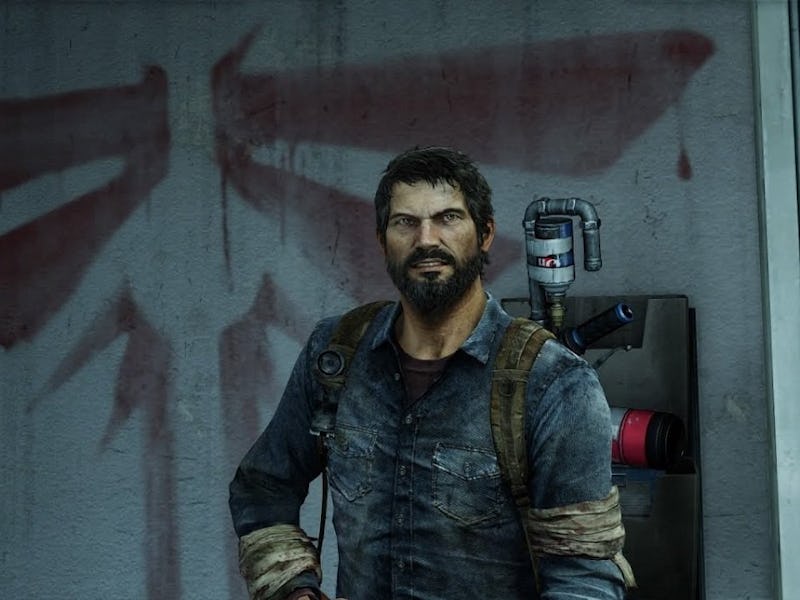HBO’s The Last of Us Still Hasn’t Fixed Its Original Video Game's Biggest Flaw
Are the Fireflies really a light in the dark?

HBO’s The Last of Us isn’t just the best video game adaptation that’s ever been made, it’s also by far the most faithful. While it has made its fair share of changes along the way, the live-action post-apocalyptic series has stuck impressively close to the events and story of the original 2013 video game that inspired it. As a result, The Last of Us has managed to build the same dramatic power and emotional resonance as its source material.
Unfortunately, the HBO series’ reverence for its source material has also resulted in it making the same critical mistake as both of Naughty Dog’s original Last of Us games. The problem, like so many things in The Last of Us, goes back to the Fireflies.
Last of Us creator Neil Druckmann has repeatedly said that the Fireflies represent a light in the darkness of the show’s post-apocalyptic world, but viewers have never actually been shown that. Instead, everything the HBO series has revealed about the group just makes us wonder even more: Are the Fireflies good, actually?
“When you’re lost in the darkness, look for the light.”
In The Last of Us Episode 1, Tess (Anna Torv) gets caught in the middle of a deadly and explosive attack from the Fireflies. Later in that same episode, Marlene (Merle Dandridge) despairs over the Fireflies’ inability to permanently oust FEDRA from power in the Boston Quarantine Zone and sarcastically jokes that the group may as well just be nothing more now than the messages they spray-paint on walls. The Last of Us’ premiere, in other words, paints the Fireflies as a passionate but not necessarily effective rebel force.
While The Last of Us’ first season has provided more than a few reasons why FEDRA should be taken down, too, the series hasn’t shown viewers any reason why the Fireflies should be to be the ones to do it. As a matter of fact, The Last of Us Episode 7 not only reveals that the Fireflies are willing to recruit teenagers like Riley (Storm Reid), but that they’re also willing to supply them with pipe bombs and weapons. Like most of the Fireflies’ plans, Marlene’s mission with Riley also ends up going horribly awry.
The Fireflies’ treatment of Riley is, obviously, very morally dubious. In case that wasn’t bad enough, though, The Last of Us has also failed to provide any specific details about the kind of world the Fireflies want to build after they remove FEDRA from power. Are they going to actually build a sustainable, democratic system again? Or are they just going to be as bad, violent, and tyrannical as the rebels that Joel (Pedro Pascal) and Ellie (Bella Ramsey) run into in Kansas City in The Last of Us’ fourth and fifth episodes?
"Fight for 20 years and get nowhere, you're not a rebellion. Just spray paint."
These are all questions that might not need to be answered if the Fireflies didn’t have much of a future role to play in The Last of Us’ story. However, as anyone who has played Naughty Dog’s original Last of Us games will attest, the Fireflies’ importance extends far beyond their original purpose of bringing Joel and Ellie together.
Without spoiling anything, it’s worth noting that the Fireflies play an important role in both the conclusion of 2013’s The Last of Us and its divisive 2020 sequel, The Last of Us Part II. In the latter game, both the Fireflies and their cause are discussed in an overwhelmingly positive light that, frankly, doesn’t totally gel with the way the group is depicted in 2013’s The Last of Us. The series’ conflicting depictions of the Fireflies consequently became a massive point of conversation and debate among gamers after The Last of Us Part II was released.
Unfortunately, it looks like HBO’s The Last of Us is heading toward a similar fate right now. Indeed, while the series has gone out of its way to improve upon certain aspects of its source material, the series hasn’t provided a clearer depiction of the Fireflies than the video game that inspired it. That’s a major cause for concern, especially considering how important the Fireflies’ supposed moral superiority is to the story of The Last of Us Part II.
The Fireflies will play a far bigger role in The Last of Us’ future seasons than viewers may think.
The Inverse Analysis — Throughout its first season, The Last of Us has done a surprisingly good job of communicating most of its necessary information visually rather than verbally. However, when it comes to the Fireflies, the series has told viewers a lot about the group and its intentions without actually providing much proof to back up its statements about the rebel faction.
That was a problem in 2013’s The Last of Us. Now, 10 years later, it’s still an issue in the game’s HBO adaptation.
New episodes of The Last of Us air Sundays on HBO.